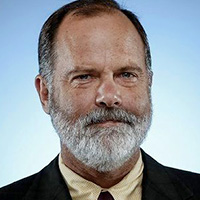AS THE NATION ABSORBS WHAT IT MEANS to lose a constitutionally protected right — the right of a woman to have an abortion — California’s place in America’s federalist system is taking on new importance. While some states impose restrictions that even abortion opponents worry may go too far, California is consciously and deliberately styling itself as a place of sanctuary, where those seeking abortions will be protected rather than prosecuted.
State Sen. Toni Atkins, president pro tem of the California Senate, noted that this state is choosing an alternate path. Abortion rights are strongly protected here. “The same,” she said, “does not hold true in other states.”
Sue Dunlap, president of Planned Parenthood Los Angeles, echoed Atkins’ observation, along with the role it suggests for California. “In California,” she noted, “we are overwhelmingly supportive of reproductive and sexual health care.” With that, she said, comes “an obligation to be almost a think-tank” for exploring ways to protect that care, even as other states aggressively move to curtail it.
Events this summer proved the truth of that. On June 25, the United States Supreme Court handed down Dobbs v. Jackson, reversing
a half-century of its own jurisprudence and precedents by overturning Roe v. Wade and Planned Parenthood v. Casey. Dismissing those precedents as “egregiously wrong,” Dobbs held that the right to an abortion is not protected by the Constitution, a decision that upended American politics, not to mention the lives of countless young women who grew up with the expectation that abortion was available to them regardless of where they live in the United States.
Within days, 13 states had imposed restrictions that Roe and Casey would have prohibited. More states have followed in the weeks since. Some have abolished abortion rights outright and are seeking to go even further, including restricting travel by women who might seek legal abortions elsewhere, interfering with delivery of medicine via the mail and allowing private civil actions against women and doctors suspected of conspiring to violate state laws. Some states are threatening action against businesses that aid employees who travel for abortions; some are considering abortion bans that would command a woman to deliver a baby conceived when she was raped.
To Atkins and others, those are horrifying scenarios that provide an opportunity for California to lead. Gov. Gavin Newsom and the Legislature are enacting abortion protections, and voters here will soon decide whether to safeguard abortion rights in the California constitution. (The state constitution already protects the right of privacy, upon which Roe and much abortion law is based, but the proposed amendment would make it clear that the right to abortion is guaranteed even without reliance upon privacy.)
Politicians are emboldened to take those actions in part because public sentiment in California strongly favors reproductive freedom. A 2021 poll by the Public Policy Institute of California, conducted as the nation braced for the possibility that the U.S. Supreme Court would overturn Roe v. Wade, found overwhelming support for Roe’s protections. In California, support for abortion rights crosses all lines. The poll found that both men and women supported Roe by wide margins, as did Whites, Latino/as, Blacks and Asians. Perhaps unsurprisingly, nearly 90% of California Democrats wanted Roe preserved; more interestingly, so did nearly 60% of California Republicans.
Newsom, with the enthusiastic support of the Legislature, has backed a host of bills to protect and extend abortion rights. Among other actions, Newsom approved a $5 million grant to the UCLA Law School to create the Center on Reproductive Health, Law and Policy, which opened this summer and is under the leadership of Professor Cary Franklin. The center will train students in reproductive rights, produce scholarship in that field and educate decision makers on the implications of America’s changing abortion laws.
Although the center intends to host scholarship on all sides of the abortion debate, the university is not a neutral arbiter. Commenting on the court’s ruling in Dobbs, UC President Michael Drake said that the decision “is antithetical to the University of California’s mission and values. We strongly support allowing individuals to access evidence-based health care services and to make decisions about their own care in consultation with their medical team.”
CALIFORNIA’S EMBRACE OF REPRODUCTIVE CHOICE predates the events of this summer. Indeed, it predates Roe itself, and it once united the political parties here. It was none other than Ronald Reagan, then California’s governor, who signed one of the nation’s most liberal abortion laws in 1967. Until then, California permitted abortions only in cases where the mother’s life was at risk, but the Legislature approved a bill by Democrat Tony Beilenson to extend the protection when pregnancy resulted from rape — either forcible or statutory — or when carrying the fetus to term might “gravely impair” the mother’s physical or mental health. Reagan equivocated until the final day — he worried about the vagueness of a grave impairment of mental health — but he then affixed his signature, making the conservative icon an unlikely pioneer in abortion rights.
In recent years, California has staked out abortion rights as a matter of state policy and self-image. On May 31, 2019, Newsom signed the California Proclamation on Reproductive Freedom, emphasizing the right of privacy in California’s constitution and pledging the state to defend the right to choose an abortion for women of all ages — with or without parental consent or the consent of the biological father — as well as a right of access to abortion regardless of ability to pay and a right to choose a provider.
So strongly are abortion rights protected here that the issue has altered California politics: It is virtually impossible today to be elected to statewide office in California unless one supports reproductive choice.
Since the U.S. Supreme Court announced its Dobbs decision, California’s efforts to protect abortion rights have only accelerated. In addition to the UCLA grant, the state has approved a host of bills, including ones to protect women seeking abortions from being subjected to legal actions emanating from other states; to eliminate insurance co-pays for abortions; to let nurse-practitioners perform first-trimester abortions; and to help poor women afford abortions.
Those bills, and others almost certain to come, will be intended to provide real protections and to reinforce the fact that California is a place where pregnant women in need of help can safely receive it. Given that so many states are moving in the opposite direction, California is braced to receive a wave of visitors — so-called “abortion tourists.”
A June 2022 report by UCLA’s new Center on Reproductive Health, Law and Policy describes the expectation: “Between 8,000 and 16,100 more people will travel to California each year for abortion care. Of those, we estimate that between 4,700 and 9,400 will come to Los Angeles County.” The report predicts the influx will cross demographic lines and be concentrated among those who lack insurance and live in states without Medicaid expansion, making them especially vulnerable to new restrictions. Women 17 and younger also are likely to be disproportionately represented.
Many who come to California seeking abortions are expected to be from Arizona, Utah and Texas, which have moved to restrict abortion rights since the Dobbs decision. Smaller numbers are predicted to come from Idaho, Montana, Wyoming, Arkansas, Louisiana and Oklahoma.
WHILE CALIFORNIA WORKS TO HELP THOSE fleeing restrictive states, scholars here are examining the new legal landscape created by the end of Roe.
In one sense, that was neither unexpected nor entirely negative for supporters of abortion rights. Even many devoted advocates of those rights worried that Roe was built on shaky legal foundations: The right of privacy, though implied by the Constitution, is not specifically enumerated, and Roe itself represented a compromise, balancing a woman’s right to seek an abortion against the state’s interest in protecting a fetus as it attained viability. The result of that balancing effort was an awkward trimester structure in Roe, one that was shallowly rooted to the Constitution and that invited challenges based on evolving views of fetal viability.
Now, stripped of Roe, legal scholars are free to pursue other, potentially more vigorous, bases for establishing the protection of abortion rights. “The need for scholars, policymakers and advocates who are focused on advancing reproductive health, law and policy could not be more pressing,” said Brad Sears, associate dean of public interest law at UCLA’s law school and one of the authors of the report on travel impacts.
This work already has begun. “For the next 50 years, what are the arguments?” asked Franklin, faculty director of the Center on Reproductive Health, Law and Policy. Could abortion rights be rooted, for instance, in the principle of equity or equal protection? “I am most involved,” Franklin said, “in imagining and rethinking the legal strategy.”
Much has been written about the U.S. Supreme Court’s work in Dobbs — its strange attempts to reinterpret American cultural history; its aggrieved tone; the logical failings of its discussion of “quickening” (first movements) and the relationship of “quickening” to viability; its arrogance in dismissing as “egregiously wrong” the reasoning of predecessors (as if Samuel Alito, author of Dobbs, were inarguably a better thinker than Harry Blackmun, the author of Roe).
One premise of Dobbs already seems demonstrably wrong: In overturning Roe, the majority in Dobbs declared that their predecessors had arrogated authority that properly belonged to legislatures, and that reversing that history would allow the court to dispense with abortion litigation by turning the matter back over to elected leaders. “It is time,” the majority concluded, “to heed the Constitution and return the issue of abortion to the people’s representatives.”
That might sound simple, but divisions among the states makes it anything but. What happens when Texas tries to prosecute a woman for coming to California and obtaining a legal abortion here? The “people’s representatives” in Texas may call for her incarceration, while those in California might offer her airfare and shelter. What happens when Alabama orders a teenager to carry to term a fetus conceived when she was raped by a relative, and she finds relief by coming to Los Angeles to have the fetus aborted? Alabama may see
her as a vessel commanded to complete a pregnancy, while California views her as a young woman deserving of help and sympathy. Alabama might charge her with a crime, while California offers her safe harbor. Which of the “people’s representatives” would prevail? Almost certainly, the court will need to decide.
Is the court done with abortion? Not if California has anything to say about it.
And it does.

























